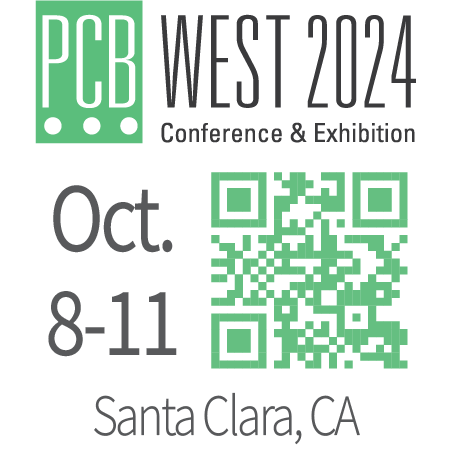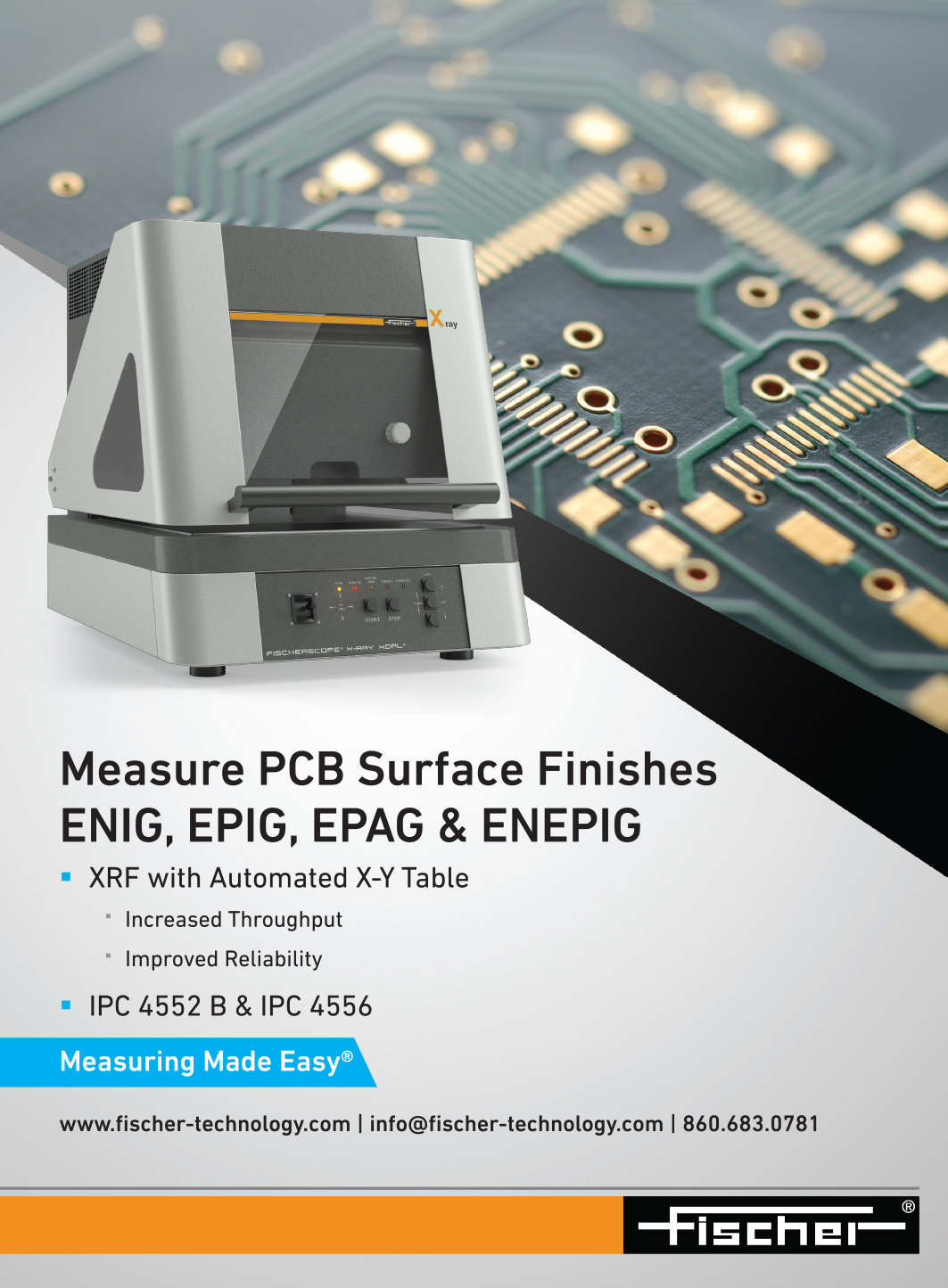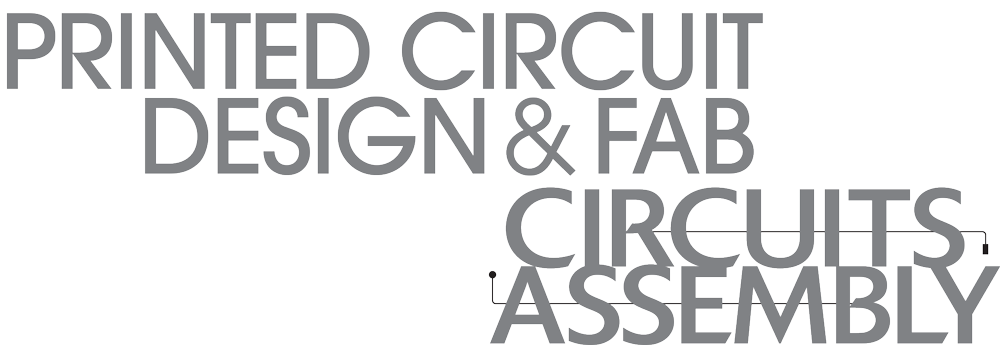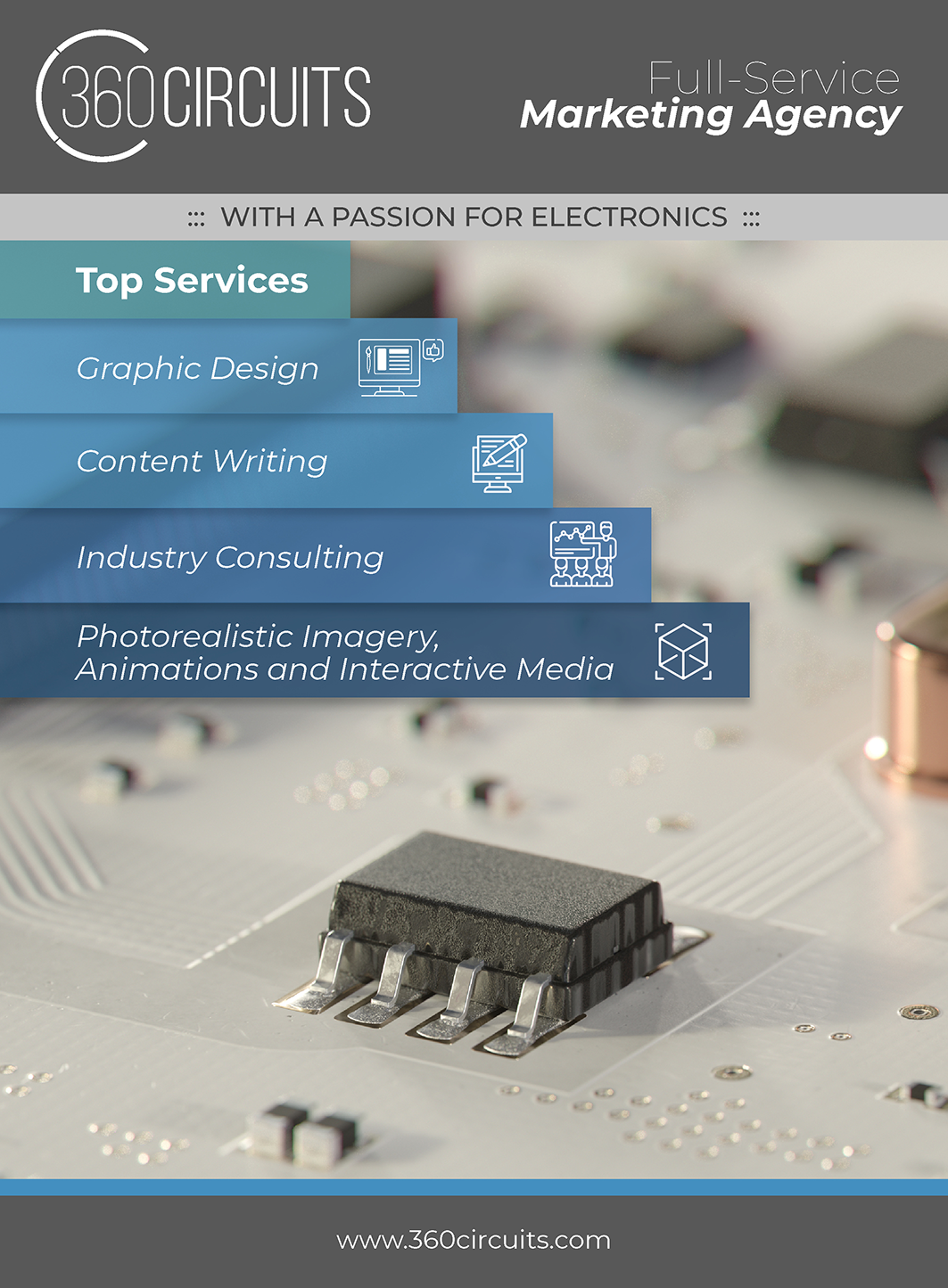


October 2025

This issue of PCD&F / CA is brought to you by:



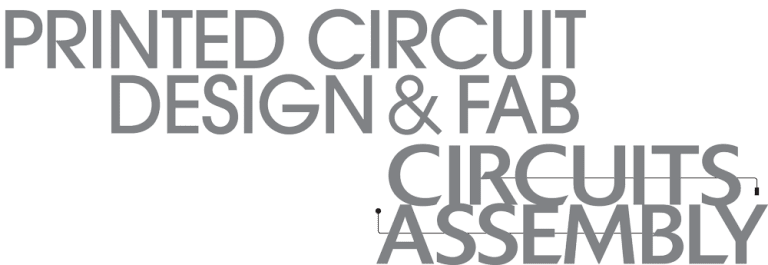
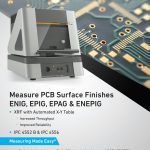



PCEA
PO BOX 807
AMESBURY, MA 01913
PCEA BOARD OF DIRECTORS
Stephen Chavez, CHAIRMAN
Susy Webb, VICE CHAIRMAN
Justin Fleming, SECRETARY
Anaya Vardya, TREASURER
MEMBERS
Jim Barnes
Michael Buetow
Tomas Chester
Douglas Dixon
Juan Frias
Richard Hartley
Matthew Leary
Charlene McCauley
Eriko Yamato
pcea.net
PUBLICATION
- PCD&F/Circuits Assembly digital.pcea.net
WEBSITES
- PCD&F pcdandf.com
- Circuits Assembly circuitsassembly.com
NEWSLETTER
- PCB Update pcbupdate.com
PODCASTS
- PCB Chat pcbchat.com
EVENTS
- PCB West pcbwest.com
- PCB East pcbeast.com
- PCB Detroit pcea.net/pcb-detroit
EDUCATION
- PCB2Day pcb2day.com
- PCEA Training pceatraining.net
- Printed Circuit University printedcircuituniversity.com
AWARDS PROGRAMS
- Service Excellence Awards circuitsassembly.com
- NPI Awards pcea.net/npi-award

mike@pcea.net
frances@pcea.net
Jeffrey Beauchamp, Peter Bigelow, Robert Boguski, John Burkhert, Jr., Stephen Chavez, Mark Finstad, Geoffrey Hazelett, Nick Koop, Jake Kulp, Alun Morgan, Susan Mucha, Greg Papandrew, Chrys Shea, Jan Vardaman, Gene Weiner
production@pcea.net
nathan@pcea.net
frances@pcea.net
will@pcea.net
frances@pcea.net
mike@pcea.net
jacqueline@pcea.net
PRINTED CIRCUIT DESIGN & FAB/CIRCUITS ASSEMBLY is distributed without charge to qualified subscribers. To subscribe, visit pcdandf.com or circuitsassembly.com and click on Subscribe.
For changes or cancellations to existing subscriptions: subscriptions@pcea.net
PRINTED CIRCUIT DESIGN & FAB/CIRCUITS ASSEMBLY is published monthly by Printed Circuit Engineering Association, Inc., PO Box 807 Amesbury, MA 01913. ISSN 1939-5442. GST 124513185/ Agreement #1419617.
© 2025, by Printed Circuit Engineering Association, Inc. All rights reserved. Reproduction of material appearing in PRINTED CIRCUIT DESIGN & FAB/CIRCUITS ASSEMBLY is forbidden without written permission.

Magnetic Transistors – and Lack of Funding Clarity – Leave Us Spinning
Magnetic transistors have been a hot topic for years, but a breakthrough led by researchers at MIT with chromium sulfur bromide (CrSBr) could push us closer to realizing more energy-efficient and powerful electronics. By replacing silicon with this 2D magnetic material, researchers have overcome a significant hurdle: combining the benefits of magnetism and semiconductor properties in a single device.
The ability to switch or amplify the current by a factor of 10, along with the reduced energy cost of switching, could have huge implications for everything from memory storage to reducing power consumption in devices. And the fact that these magnetic states can be controlled by both electric current and an external magnetic field means added flexibility without added complexity. That’s a real game-changer.
The underlying thesis of increasing electronics efficiency is to harness electron spin to control the flow of electricity. It’s that spin that causes electrons to behave like magnets. The combination of magnetism and semiconductor physics is known as spintronics.
READ FULL ARTICLE
TLT Expands in Vilnius with 4 New Factories
VILNIUS, LITHUANIA – TLT has opened four new factories at its High-Tech Hill technology park, marking a milestone for European electronics manufacturing. The expansion includes a new state-of-the-art PCB plant – the first built in Europe in two decades – along with expanded facilities for electronics manufacturing, mechanical engineering and component assembly.


Local Government Approves Incentives for India’s Largest PCB Plant
CHENNAI, ANDHRA PRADESH, INDIA – The Andhra Pradesh government has cleared an ₹856-crore ($993 million) incentive package to support the development of India’s largest printed circuit board facility, to be established by Syrma SGS in partnership with Korea’s Shinhyup Electronics.
The project, valued at ₹1,595 crore, will be located in the Naidupeta industrial area near Chennai. The new site will produce single-layer and multilayer PCBs, HDI/flex PCBs, copper-clad laminate (CCL) manufacturing and electronics manufacturing services. The state government will provide 12.6 acres of land at a subsidized rate to facilitate the initiative.
Scheduled for commissioning by October 2026, the facility is expected to contribute significantly to Syrma SGS’s revenues in fiscal 2027 and strengthen India’s electronics ecosystem. The site will produce PCBs for the automotive, electric mobility, healthcare and smart metering sectors.
READ FULL ARTICLEPanasonic Industry to Double Megtron Circuit Board Material Production for AI Servers
TOKYO – Panasonic Industry, part of the Panasonic Group, will significantly expand its Megtron multilayer circuit board material production in Southeast Asia to address surging demand for AI servers and ICT infrastructure.
Panasonic Industry will invest approximately 17 billion yen ($114 million) in a new manufacturing facility at its plant in Ayutthaya, Thailand, that will double output over the next five years. The facility is scheduled to begin operations in November 2027, with mass production starting by the end of fiscal year 2028.
Megtron materials are used in servers, switches and routers that power AI and next-generation networking. Panasonic Industry stated that the investment reflects its commitment to innovation in electronic materials and its role in enabling advanced AI development and broader societal solutions.
Kaynes Technology’s CEO Resigns
KARNATAKA, INDIA – Kaynes Technology announced that chief executive officer and key managerial personnel Rajesh Sharma has tendered his resignation, effective Oct. 31. The company stated Sharma is stepping down to pursue opportunities outside the organization.
The move came as a surprise to many outside the company, which, during his nearly four-year tenure, has become one of India’s leading EMS companies, with revenues for the fiscal year ended in March of $325 million.
In his resignation letter, Sharma reflected on milestones such as the company’s IPO and listing, capacity expansions, domestic and global acquisitions. He described his journey with Kaynes Technology as “very fulfilling, both professionally and personally.”
Videoton EAS Bulgaria Expands into Automotive Electronics Production
STARA ZAGORA, BULGARIA – Videoton EAS’s Bulgarian subsidiary, VEAS Bulgaria, has officially entered the automotive sector with the launch of serial production of electronic modules for lighting systems. The milestone follows a Certificate of Compliance received last December and successful validation by a leading automotive manufacturer in August.
Videoton is one of Europe’s largest EMS companies, with 2024 revenues of EUR 771 million (about $900 million).
The Stara Zagora plant is now producing its first automotive product family, marking a significant step toward full IATF certification, which requires 12 months of automotive manufacturing activity. Definitive certification is expected in the fourth quarter of 2026.
READ FULL ARTICLEVariosystems Relaunches Southlake Facility
SOUTHLAKE, TX – Variosystems has relaunched its 65,000 sq. ft. facility here, expanding its North American electronics manufacturing services (EMS). The redesigned site was unveiled on Sept. 9, in a celebration joined by local government officials, employees and partners.

The modernization of the Southlake facility is centered on three priorities: supporting efficiency and sustainable growth, strengthening a USMCA-compliant electronics supply chain in North America and laying the foundation for future investments and customer collaboration. The relaunch also positions the site as a hub for enhanced box-build assembly capabilities. With this relaunch, Variosystems sets its mission of co-creating with innovators, advancing EMS expertise and delivering integrated solutions with greater proximity to its North American customer base.
Inventec to Establish Manufacturing Facility Near Houston
KATY, TX – Top 10 EMS/ODM Inventec is set to establish a presence in the Houston suburbs, with renovations beginning this fall on its first facility in the region. The company has leased approximately 540,000 sq. ft. of space in Katy, signaling a long-term commitment to the area.
Phase I of the project, backed by a $5 million investment, will convert 39,390 sq. ft. of the warehouse into an electronics assembly facility. Work is scheduled to begin last month, with completion expected by the end of October. Investor filings project up to $55 million in leasehold improvements over the 10-year lease, suggesting further expansions are planned.
Industry reports link the Katy facility to Inventec’s broader $85 million US investment strategy approved earlier this year, with Texas chosen for its reliable power grid, proximity to Mexico operations and suitability for high-demand assembly such as AI servers.
READ FULL ARTICLEBenchmark Names Moezidis Next CEO, Benck to Retire in 2026

TEMPE, AZ – Benchmark Electronics in September promoted David Moezidis to president, and named him the successor to longtime chief executive Jeff Benck, who is retiring next year.
Moezidis, who was Benchmark’s executive vice president, will also retain his position as chief commercial officer. He has more than 35 years of experience in engineering, operations and sales across the EMS, semiconductor and digital imaging sectors.
Benck, who has led the company since 2019, is set to retire Mar. 31. He will continue as an advisor until March 2027 to ensure a smooth transition.
Read Full ArticleScanfil Expands and Modernizes Johor Bahru Facility
JOHOR BAHRU, MALAYSIA – Scanfil has officially inaugurated the expansion and modernization of its facility here, building its electronics and complex box-build manufacturing capabilities. The $5 million investment, first announced in January, expands production space by nearly 50% and enhances efficiency, quality and capacity.
The Johor Bahru site, which became part of Scanfil through the acquisition of SRXGlobal in October 2024, employs 170 people and operates on one-stop-shop principles for electronics manufacturing. The upgrades include new machinery, enhanced IT systems and a redesigned layout under Scanfil’s Dream Factory program, which integrates IT, processes and technology.
CEO Christophe Sut highlighted that the expansion reflects strong customer demand and the favorable business environment in Malaysia, reinforcing Scanfil’s strategic plan in the region.
Syrma, Elemaster Launch India JV for High-Rel Electronics
BENGALURU – Syrma SGS Technology has signed a joint venture agreement with Italy-based Elemaster to form Syrma SGS Elemaster Private Limited, an India-focused platform serving high-reliability customers in railway, industrial and medical electronics. The JV’s initial ~20,000 sq. ft. facility in the Bommasandra Industrial Area of Bengaluru will be configured for SMT, THT and box-build assembly lines.
The partnership combines Syrma’s scaled, cost-efficient manufacturing with Elemaster’s design expertise and European OEM relationships, aiming to unlock margin-accretive growth, increase share-of-wallet with global accounts and accelerate “Make in India” solutions. A phased expansion under joint governance is planned to support demand. Company leaders said the JV strengthens India’s position as a trusted hub for advanced manufacturing while giving customers local production with global quality and traceability.
Nathan Trotter Announces $65M Tin Refining Plant
RICHMOND, VA – Nathan Trotter will invest approximately $65 million to construct a 115,000-sq. ft. tin processing facility on a 44-acre site north of Martinsville, which will significantly increase American tin supply and recycling capabilities. At full capacity, the new Tin Ridge facility is expected to create an estimated 118 local jobs.
The US government has declared tin a critical mineral due to its role in solder used in circuit boards and electronics components for countless commercial and government applications, including critical defense systems, smartphones, flat panel displays, electric vehicles, batteries, advanced robotics, and aerospace technologies.
To address the nation’s dependence on tin imports, Nathan Trotter will develop and operate the nation’s first plant capable of refining “noteworthy volumes” of both tin concentrate and scrap tin in support of the US economy and defense industrial base. The cutting-edge facility has also been designed to utilize the most advanced and environmentally friendly technology, enabling successful operations into the future.
READ FULL ARTICLE
PCD&F
Eltek won $2.4 million in defense PCB orders from an Israeli customer, with deliveries slated through 2026–27.
Jiangsu Shengyi has begun the second phase of a new flex materials plant at its site in Nantong, Jiangsu province, China.
Odisha announced a partnership to drive PCB and advanced electronics manufacturing in India, building its position in the semiconductor sector.
Olympic Circuit will invest CNY 2.6 billion ($364 million) to add a new chip-embedded HDI PCB plant in Heshan.
Wus Printed Circuit Kunshan is preparing for a listing in Hong Kong.
CA
Aimtron Electronics will produce an initial 50,000 IIoT/AI devices for Vanix starting in October, with delivery by year-end.
Alfonso Group has launched the consumer electronics brand Alfera Technik, and is planning a major manufacturing facility in Ibadan, Nigeria.
Apple CEO Tim Cook said the company’s $600 billion plan to build 79 US factories over four years will spark a “domino effect” for manufacturing, even as iPhones remain largely assembled overseas.
Asus has shifted over 90% of its US-bound motherboard and PC production to Southeast Asia to reduce tariff exposure.
Carlo Gavazzi, the Swiss electronics manufacturer, has announced it will progressively reduce and eventually close its production operations in Malta, ending almost 40 years of activity on the island.
Read Full Article
PCD&F
Curtiss-Wright named Ken Grove senior supplier development manager, PCB/PWB.
Millennium Circuits Ltd. named David Warner product engineer.
Nano Dimension named David S. Stehlin chief executive.
NCAB Group promoted Shawn Rocha to program director.
Saab named Eric Wolf electrical engineer.
CA
Altus Group promoted Mike Todd to operations director for capital equipment customers across the UK & Ireland.
MacDermid Alpha named Matt Chang sales director, circuit board assembly.
Naprotek appointed Mark Crebs as director of business development for products & platforms.
NOTE appointed Bahare Mackinovski chief sales and marketing officer.
Safari Circuits appointed Keith Kolp plant manager.
Read full article
CIRCUITS ASSEMBLY Opens Entries for 2026 NPI Awards

PEACHTREE CITY, GA – CIRCUITS ASSEMBLY is accepting entries for its 2026 New Product Introduction Awards for electronics assembly equipment, materials and software suppliers.
Colloquially referred to as the Engineer’s Choice Awards – a nod to the background and independence of the judges – the 19th annual NPI Awards recognize the leading new products for electronics assembly during the past 12 months. Recipients are selected by an independent panel of practicing industry engineers and are presented by CIRCUITS ASSEMBLY.
Entrants must submit a single registration form for each product and category entered. All entries must include a 250- to 1,000-word statement describing the product in the following terms:
Read Full ArticlePCEA and Mobius Materials to Hold PCB Community Meetup at PCB West
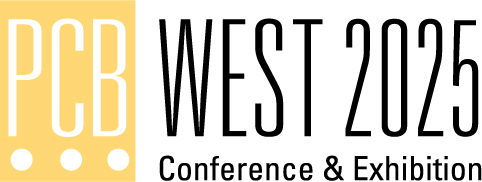
PEACHTREE CITY, GA – The Printed Circuit Engineering Association and Mobius Materials will sponsor a printed circuit board industry community meetup on Oct. 1, at the PCB West trade show.
The event will feature networking and a panel discussion on the Ever-Changing Procurement Environment and will be held at the Santa Clara (CA) Convention Center following the close of the exhibition on Oct. 1.
The meetup is an opportunity to discuss best practices and innovative solutions for real-time with like-minded professionals in a relaxed and informal setting. The get-together features a period of networking followed by a short panel discussion and will take place from 6 to 7:30 p.m.
Read Full ArticleFall PCB Design Training Classes Scheduled
 PEACHTREE CITY, GA – PCEA Training will hold its final scheduled sessions for the Certified Professional Circuit Designer (CPCD) training and certification program starting Nov. 3 and continuing once a week through Dec. 1.
PEACHTREE CITY, GA – PCEA Training will hold its final scheduled sessions for the Certified Professional Circuit Designer (CPCD) training and certification program starting Nov. 3 and continuing once a week through Dec. 1.
The 40-hour instructor-led course is designed for printed circuit engineers, layout professionals and other individuals currently serving in the design engineering industry or seeking to get into it.
The classes cover the gamut of printed circuit design engineering, from layout, place and route to specifications and materials to manufacturing methods. Schematic capture, signal integrity and EMI/EMC are also part of the comprehensive program.
Read Full ArticleRF and UHDI Design Focus of October Member Webinar
PEACHTREE CITY, GA – John Johnson of ASC Sunstone will present a free webinar for PCEA members on RF PCB design and UHDI technology on Oct. 28 at 1 p.m. Eastern.
The webinar will cover the design and manufacturing intricacies of PCBs with unique RF features, especially as the industry shifts from high-density interconnect (HDI) to ultra-high-density interconnect (UHDI) technologies. It highlights the performance advantages of UHDI in terms of trace definition, impedance control and signal integrity, supported by new additive processes and advanced materials. Attendees are guided through considerations for material selection, RF feature implementation (e.g., edge plating, via fences), and the challenges of building complex, high-performance boards.
To register, click here.
Read Full ArticleASSOCIATION NEWS
Certification. The following recently passed the PCEA Certified Printed Circuit Designer exam:
- Aaron Burton
- Alexander Guarin
- Devin Hart
- Joseph Thomas
Conferences. Abstracts for next year’s PCB East technical conference are due Oct. 3. The conference, the largest of its kind in New England, takes place next spring in the Boston suburbs and focuses on training and best practices for printed circuit board design engineers, electronics design engineers, fabricators and assemblers. Submit abstracts at https://pcbeast.com/abstract-submission-guidelines.
PCB Detroit will return in spring 2026. More details will be forthcoming on the PCEA website.
Networking. The PCEA Discord server brings together engineers and designers from around the world on a private channel to discuss technical questions and career opportunities. To join, contact PCEA. Recent conversations covered the implementation of BGA packages, designing high-current boards and circuit simulations.
CHAPTER NEWS
National: Last call for abstracts for PCB East 2026. The one-day exhibition takes place Apr. 29, at the DCU Center in Worcester, MA. The four-day technical conference takes place Apr. 28 to May 1. The DCU Center is a first-class facility, and Worcester is the second-largest city in New England. Abstracts for the technical conference are due Oct. 3. Please use the link; no emailed abstracts will be accepted.
Portland, OR. Our September online meeting took place Sept. 25. Doug Brooks, president of Ultracad Design, spoke on PCB Via and Trace Currents and Temperature Biggest Myths, a dive into a topic that is often overlooked, but can help determine the number and type of how many vias a design needs.
Our annual in-person chapter meeting will be Oct. 29 at 10 am at the Portland State University Electronics Prototyping Lab. This is a fantastic opportunity to get a peek at their state-of-the-art PCB prototyping equipment and possibly explore some of their current development projects. A headcount is needed, so please RSVP to Stephan Schmidt.

Mexican Tariff Plans Could Cause Headaches in Beijing
MEXICO CITY – Mexico is weighing steep new tariffs on a broad swath of imports as part of an industrial policy aimed at protecting domestic manufacturers.
President Claudia Sheinbaum in September introduced a bill that would impose duties ranging from 10% to 50% on goods spanning various industries, including the automotive sector, which is key to many US-based companies.
The measure is part of the government’s Plan México initiative, unveiled earlier this year, which seeks to reduce dependence on foreign suppliers and increase local production. The bill calls for sourcing at least 50% of “strategic supplies” domestically, positioning tariffs as a “strategic tool” of trade and industrial policy rather than simply a revenue generator. (more)
Hot Takes
PC shipments fell 1.4% year-over-year to 18.6 million units in the second quarter. (Canalys)
The US Pentagon has barred tech vendors from using China-based staff on cloud contracts, following a report that exposed security risks tied to Microsoft’s overseas engineers. (ProPublica)
Vietnam is targeting $145 billion in electronics exports for the year, building on last year’s $127 billion performance. (Vietnam Electronic Industries Association) (more)

Sensors: The Unsung Catalyst Behind AI’s Value
Amid AI hype, true progress depends on the accuracy of sensor-driven data collection.
While the world is flummoxed over the up-and-down nature of tariffs and the political drama they create, one bright spot in the news the past year or so, and impacting our industry more than any, is artificial intelligence, or AI.
Indeed, if your investment portfolio lacks an AI stock, or your customer base doesn’t include a player in the AI world, pundits believe you are missing the boat. But I keep thinking, what exactly powers the boat?
As I observe the excitement swirling around this ballyhooed, already prominent next-wave technology, I keep thinking about the real value it adds. Has any product touted as artificial had or produced value? Intelligence, yes, is coveted and does create value, but not by itself. To wit, in the early years of my career, I often heard the adage, “garbage in, gospel out!” And in many ways that remains true even when the input comes from intelligence. Plenty of brilliant people over the centuries have done anything but offer, create or generate value. Possibly we all overlook the real “value-add” that enables AI: sensors.
Read Full Article
Turning Trade Shows into Lasting Opportunities
What’s your company’s marketing strategy?
Trade shows are great for business, providing valuable contacts and permitting your company to build industry exposure and credibility. Yet many firms attend shows haphazardly and sporadically, lacking a strategy to maximize their time and effort. What is your trade show strategy? Do you have one?
Thousands of trade shows occur annually for your company to attend. Some focus on the electronics industry, attracting individuals who want to buy PCBs or related products and services. Others cater specifically to a customer’s industry, and at these shows, you’ll be able to find fellow exhibitors who also need circuit boards, just like your customers do.
Which trade shows should your company invest in? That depends on the general demographics of a show’s usual attendees and how many could be prospective target accounts. Also, a good indication that a particular trade show might be worth the time to attend or exhibit at is how many of your competitors are there. It doesn’t hurt to follow someone else’s lead, especially when your competitors have been coming to the same show for years. Obviously, they find it worthwhile.
Read Full Article
Leadership and Horse Sense
Staying on course and supporting colleagues in challenging situations fosters trust and respect.
Leadership and interpersonal skills are essential for all electronics manufacturing services (EMS) management team members. These skills become even more critical in program management and sales roles, where individuals often need to execute with little or no authority over the teams they rely on. I teach these skills in a range of programs. Over the past year, I’ve had a surprising journey that reinforced how important it is to practice that knowledge daily.
As some readers know, I ride horses. Last year, my 27-year-old senior horse began to lose his battle with osteoarthritis. I bought Prim, a 5-year-old mare, so I could continue competitive riding without overstressing Max’s joints.
Prim is a masterclass in leadership in a multi-generational workforce. Feedback from a human teammate might bruise your ego, but when a 1,200-lb horse decides you’re not leading well, it delivers the lesson physically: slamming you into a wall, kicking, biting, rearing or bucking.
Read Full Article
PCB Codesign and Outsourcing
When should you use partitions?
Looking at a spread of components on a printed circuit board without any connections complete can be intimidating. Where does one start?
That question was too much to answer for one of my colleagues back in the day. He was a deer in the headlights, unable to move forward after placing both sides of the board.
The board in question, called the integrated module, was intended to replace a collection of five boards with various functions. It was a 10-layer, double-sided HDI board at a time when HDI was not yet a common thing. It was the most complex board for the company up to that point (Figure 1). One of the evergreen rules of a startup is to do whatever you must to succeed.


Exoskeletons, Festivals and the Future of Wearable Robotics
Technology that keeps us moving naturally is the juice for better living.
Wearable technology and robotics have brought many exciting and helpful innovations to our work and lives. Yet the most exciting developments – adaptive and protective clothes made from smart fabrics, the witty humanoid home concierge – remain more science fiction than science. Bringing the two together, however, offers an exciting way forward that’s ready to explore right now.
Wearable robotics have already been commercialized in industrial exoskeletons, which some companies are introducing to give workers increased strength and endurance when performing physically demanding tasks. There are exciting developments in prosthetics, too, empowering specialists to restore not only the appearance of a limb such as a hand or arm, but also the strength and fine dexterity.
While industrial applications and cutting-edge medical research have driven early development, consumerization can offer an exciting new avenue. It could enhance the quality of life for many of us, especially as we age. I may have seen the beginning of this shift recently, at an outdoor music festival in the UK. One elderly reveler brought a personal exoskeleton to help get around the outdoor venue and cope with the rural terrain. I hope we will see more of this in the future, and that this kind of assistance can become broadly accessible.
Read Full Article
Minimum Finished Hole Size and How it Impacts Manufacturability
Not every design is practical for every volume.
Not long ago, a customer sent us an 8-layer rigid PCB design for quotation. On the surface, nothing unusual – until we noticed the minimum finished hole size (FHS) was 4 mils. That number might not sound alarming, but in PCB manufacturing, 4 mils is a red flag. Here’s why.
The issue arises when fabricators drill a plated through-hole (PTH) and deposit copper during plating. The remaining diameter after this process becomes the finished hole size. A 4-mil FHS with a tolerance of ±4 mils technically ranges from 0 to 8 mils. That kind of spread becomes nearly impossible to maintain in volume production.
To make a PTH, fabricators start with a larger drill size and plate copper along the walls. The smaller the drill, the shorter its flute length – and the fewer panels manufacturers can drill in a stack. Large-scale factories typically drill 10–20 panels at a time for efficiency, but a tiny drill bit can’t survive that workload, which drives up cost and limits throughput. In practice, the smallest common drill diameters used in offshore volume production sit around 8 mils (0.2 mm). After plating (about 1 mil per side for IPC Class 3), that leaves a finished hole closer to 6 mils.
Read Full Article
What Is Intelligent Design Data Exchange?
Stop guessing: Why it’s time to move from Gerber to IPC-2581.
Innovation in electronics continues at lightning speed, yet manufacturers still rely on PCB design data transfer methods from the 1980s. The industry default, the Gerber format, was designed for photoplotters. But while today’s design tools contain highly intelligent models rich with connectivity, stackup, component and netlist data, the handoff to manufacturing strips away that intelligence. The result? Designers and manufacturers are forced to play a time-consuming game of Guess My Design Intent. The consequences are unnecessary iterations, wasted effort and delayed new product introduction (NPI). There is a better way: IPC-2581, the open, intelligent and tool-neutral standard for PCB design data exchange. Inside a PCB design tool, the board definition is rich and complete, with:
- Connectivity (netlist: every pin, via, and trace is logically connected),
- Components (precise footprints and placements are specified),
- Stackup (layer counts, thicknesses, dielectric properties and impedance rules are captured),
- Vias and drilling (types, sizes and backdrills are defined), and
- Flex and rigid sections (structural intent is modeled).
Yet when Gerber output is generated, this intelligence gets fragmented into a dozen or more files: film records, drill data, pick-and-place files, BoMs and countless notes. Your manufacturing partner must painstakingly reassemble this “unintelligent” data to reconstruct what your design tool already knew. In contrast, IPC-2581 is an open, vendor-neutral standard for PCB data exchange. Unlike Gerber, IPC-2581 embeds intelligence directly into the data set, permitting features to be distinctly identified (e.g., distinguishing pins from vias and traces). This intelligence is critical to enabling AI-driven analysis, DfM checks and automation.
Read Full Article
Flexing Your Flex
Design tricks for tight bends.
Since you are designing flex layers into a circuit, it’s a safe bet that circuit is intended to bend. The key question is, will it survive being bent, twisted or otherwise contorted? When considering flexing, focus on a few key variables: the flex thickness, bend radius, bend angle and number of bend cycles over a lifetime. Some flexes operate in dynamic applications that experience continued flexing. Examples include the hinge in a laptop, a printer head, a drawer-type movement or a rotating mechanism. Other applications involve a limited number of bend cycles, where the circuit is bent into position and may move again during product servicing. Finally, some circuits bend into place and never move, experiencing only minor vibration. Let’s start with the static applications. Generally, if the part is bending less than 60°, it is almost impossible to cause damage. The IPC rule of thumb for static bending is simple. For one or two copper layer designs, the bend radius should be 10X the thickness of the flex. For three or more copper layers bonded together, the rule is 20X the thickness of the flex.

These rules of thumb are intentionally conservative. I like to say that if you follow them, you and your program manager can sleep well at night. In many instances, however, the circuit may need to bend more tightly. Don’t despair; it is possible, but it involves some homework.
Read Full Article
Among PCB Design, Raises are Up, Benefits are Down and Deadlines Don’t Budge
Boards aren’t the only things getting more complex. Workloads are too.
by Ryann Howard
PCB designers are, by and large, a veteran crew. Many have been in the game for decades, steadily turning out increasingly complex boards while titles and org charts shift around them.
Likewise, the annual PCD&F Salary Survey shows a stable but strained picture. Respins haven’t surged, which speaks well for quality, but workloads are climbing and professional development support hasn’t kept pace. Designers say they can keep projects on track, but they’d like better resourcing and clearer priorities before the pressure ratchets higher.
Financially, the story is steady if not perfect. Salaries continue to climb and bonuses are common, but benefits have stagnated or dropped for a third of respondents. And although job satisfaction trends positive, nearly half see themselves stepping away from the role within the next five years – a reminder that retention and succession planning will soon be just as important as design rules.
Read Full Article
A Novel Wrap Plating Method for Multilayer PCB Fabrication
Avoiding via failures caused by barrel plating separation.
by Akber Roy
PCB manufacturers face challenges in the precise registration of multiple layers, which is required to ensure reliable interconnects, and in integrating new technologies that enhance performance. We continuously optimize and simplify processes to improve efficiency, yield and maintain product quality. Balancing these factors is crucial for producing high-density, high-performance PCBs that meet the specific needs of various applications.
Here, we review and explain problems associated with conventional copper wrap plating requirements specified in IPC-6012B, and explore the advantages of the newly developed “Innovative Wrap” technology.
PCBs with via-in-pad designs undergo the VIPPO (via-in-pad-plated-over) process, where manufacturers fill the vias with either conductive or nonconductive epoxy material, then perform planarization and cap plating. Differences in CTE (coefficient of thermal expansion) of via fill material, copper plating and dielectric material cause these materials to expand at different rates during the thermal cycling that occurs during assembly. This differential expansion stresses the interconnect between barrel plating and surface copper, which can lead to reliability issues. As shown in Figure 1, in no-wrap plating, surface plating can separate from the hole plating during thermal cycles of the assembly process, causing via failures.
Read Full Article
Cold Paste, Hot Mess
Avoiding solder paste failures through proper handling and preparation.
by Kevin Pigeon
Our technical support team often sees the same preventable issues repeat themselves. Three times this week alone, I traced the root cause of a solder paste problem back to using paste straight out of the refrigerator without warming it up. In each case, once the user followed proper handling procedures, the problem resolved itself.
As more companies lose experienced staff and hire new engineers, these issues are occurring more frequently.
Solder paste is a carefully formulated mixture of metal powder and flux. Its properties – such as viscosity, tack and printability – can be affected significantly by temperature, humidity and agitation (Figure 1).


Designing for Durability: What Parylene Means for High-Rel Electronics
Test points, underfills and connectors: rethinking legacy rules for parylene.
by Mike Buetow
Conformal coatings come in several types, each with its specific properties and performance advantages.
These coatings, which include acrylics, epoxies, silicones, polyurethanes, styrenated block-copolymer and parylene, act as barriers against contamination from chemicals, moisture and humidity, and various corrosive gases and salt sprays that are found in many marine, automotive, industrial and military environments.

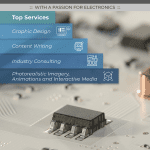


PCD&F

Blueshift PhaseBlue 1500 Series Circuit Material
PhaseBlue 1500 has a proprietary nanoporous polyimide aerogel core made of 85% air and 15% polyimide, combining lightweight flexibility with high-frequency performance. Is an environmentally compliant alternative to PTFE-based substrates, formulated without intentionally added PFAS. Dielectric constant of 1.3–1.5 @1GHz and dissipation factor below 0.001 @1GHz. Maintains stable performance across 1–10GHz without dielectric knee common to conventional perfluorinated systems. Tg is 305°C and decomposition temperature is 530°C. Weighs up to 80% less than traditional laminates, with density of 0.27–0.45g/cm³. Comes in dielectric thicknesses from 0.0065–0.030″. Thin, formable profile it suitable for 3-D structures, phased arrays, radomes, CubeSats, UAVs and aerospace communications. Integrates with standard FR-4 PCB processes.
Blueshift

Jaro Thermal DC Frameless Fans
DC Frameless Fans are engineered for embedded and space-limited applications with a lightweight, frameless design that integrates directly into heat sinks, housings and PCBs. Deliver cooling without bulk of traditional fans, combining quiet operation through fluid bearing technology with durability options including 2-ball bearings rated up to 70,000 hr. or sleeve bearings up to 50,000 hr. Customizable form factors suit compact electronics, networking gear, DIY projects and audio systems requiring noise-sensitive cooling, with improved airflow management and component-level integration.
Jaro Thermal
CA

Akrometrix PS600T Thermal Warpage Measurement
PS600T thermal warpage measurement system emulates real-world reflow conditions with improved temperature uniformity, faster heating rates, and expanded automation features. Combines multi-zone bottom heater with independently controlled topside heaters to ensure heating and cooling across samples from room temperature to 300°C, handling sizes up to 600x600mm. New features include enhanced automation for lensing and temperature response, a modern touchscreen HMI with foreign language support and expandability with modules such as Digital Fringe Projection, shadow moiré, and Digital Image Correlation (DIC).
Akrometrix
Asscon VP 2200 Vapor Phase Reflow
VP 2200 vapor phase reflow system comes in single- or dual-lane inline configurations with or without vacuum for faster processing and greater flexibility. Replaces four previous inline systems with one fully retrofittable solution, using a modular shuttle in dual-lane mode to double throughput. Permanent filter system reduces Galden filter change time by 90%, with filters positioned inside cooling zone to maintain effectiveness while halving parts count. Enhanced flux management improves uptime, while intuitive software platform and HMI provide consistent programming.
Asscon



In Case You Missed It
Component Reliability
“Reliability Analysis and Parameter Optimization of Board-Level BGA Packaging Structures under Thermal-Drop Impact Load”
Authors: Yanxi Sun, Zixin Zhen, Xuexia Yang, Miao Zhu and Chao Chang
Abstract: A three-dimensional finite element model of board-level ball grid array (BGA) package structure is established, and numerical calculations are performed based on thermal-drop impact load sequence coupling. The effects of chip thickness, solder ball height, diameter and array on its temperature field distribution, solder ball stress and average impact life are investigated. Optimization schemes were designed using Taguchi quadrature and surface response method. The optimal combination of structural parameters to minimize solder ball peeling stress was determined through mathematical and statistical analysis and regression analysis. (Soldering & Surface Mount Technology, Apr. 2, 2025, https://www.emerald.com/ssmt/article-abstract/37/4/308/1256208/Reliability-analysis-and-parameter-optimisation-of)
Read full article



